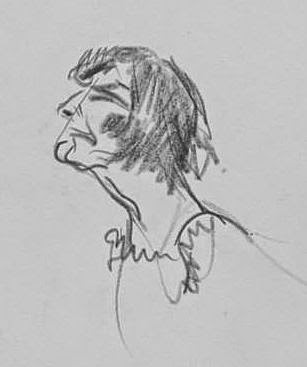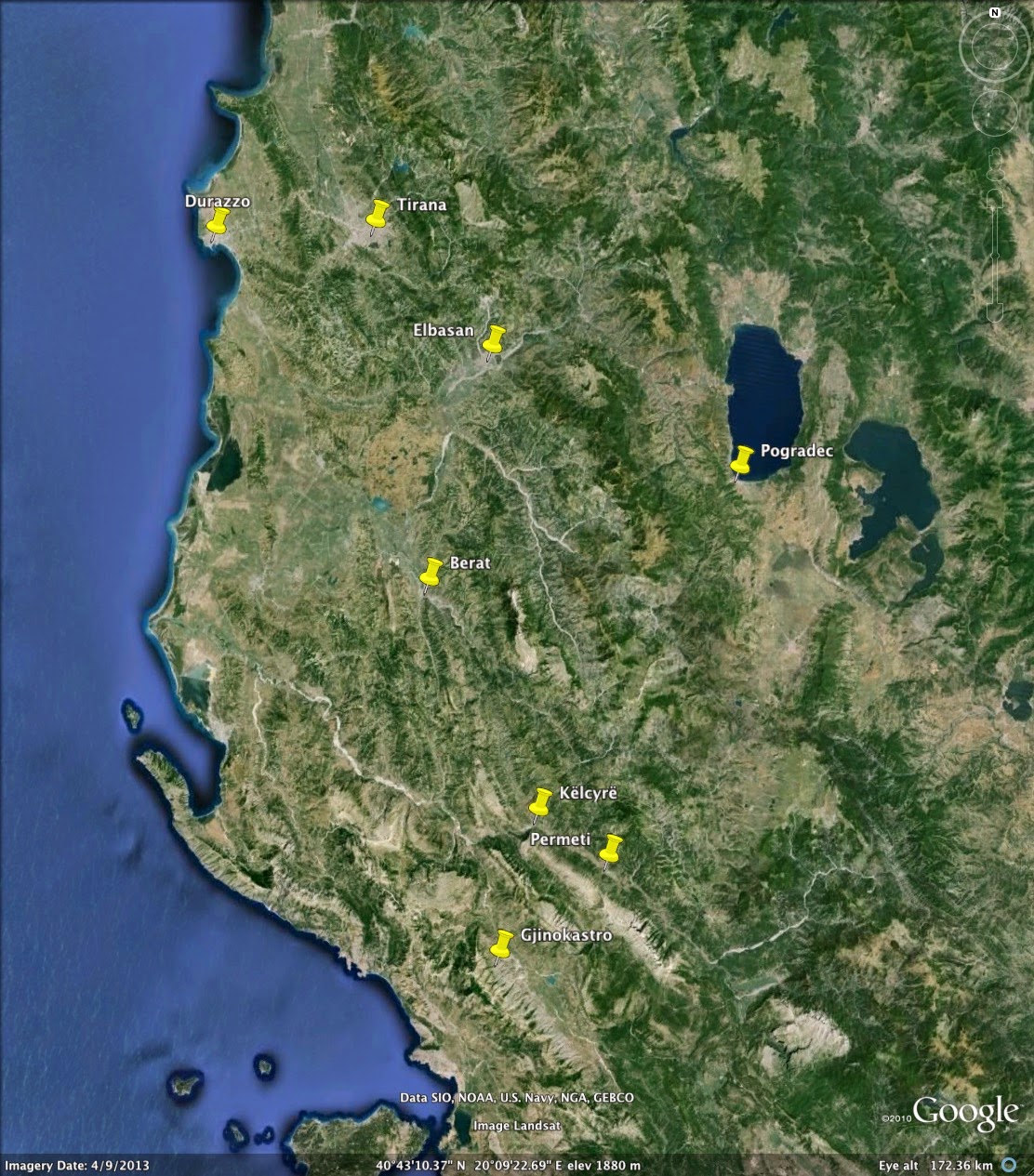Jan and Cora Gordon: An Encounter with Édouard de Max
During the second of the Paris art shows described in Jan Gordon's "GRADUS AD ... MONTPARNASSUM" (Blackwood's, March 1929, under his "Salis" pseudonym) a lady poetess "swore that De M---, the great French actor, must see Claribel's [Cora Gordon's] drawings. But, alas! De M--- was in bed."
The poetess took Cora in a cab to see the actor, along with the more exotic and esoteric of her drawings (according to Jan Gordon, Cora's designs were "mostly of semi-nude dancers making arabesques of themselves to a counter rhythm of draperies and cats.")
Left in an antechamber, she found herself "in the midst of a weird collection", every piece in the crowded assemblage "picked for some sinister or erotic quality." "At intervals a creaking voice uttered French words of considerable impropriety" - this was a parrot. Behind a curtain was a bathroom in which the bath was scooped in the black marble floor. "At its edge a huge black mastiff lay, gnawing and slobbering over a raw bone, the fresh meat on the which showed startlingly crimson against the black polished floor."
Who was this "de M---"? Not such a difficult one this; "de M---" was Édouard de Max (1869-1924), considered by his contemporaries as one of the greatest actors of his time. This connection, like that of "K" and Francis Carco/André Salmon has not been made before and is therefore quite exciting.
The poetess took Cora in a cab to see the actor, along with the more exotic and esoteric of her drawings (according to Jan Gordon, Cora's designs were "mostly of semi-nude dancers making arabesques of themselves to a counter rhythm of draperies and cats.")
Left in an antechamber, she found herself "in the midst of a weird collection", every piece in the crowded assemblage "picked for some sinister or erotic quality." "At intervals a creaking voice uttered French words of considerable impropriety" - this was a parrot. Behind a curtain was a bathroom in which the bath was scooped in the black marble floor. "At its edge a huge black mastiff lay, gnawing and slobbering over a raw bone, the fresh meat on the which showed startlingly crimson against the black polished floor."
Who was this "de M---"? Not such a difficult one this; "de M---" was Édouard de Max (1869-1924), considered by his contemporaries as one of the greatest actors of his time. This connection, like that of "K" and Francis Carco/André Salmon has not been made before and is therefore quite exciting.
Édouard de Max, caricature by Charles Gir (Wikimedia Commons, modified).
Cora was summoned into the actor's bedroom, where de Max lay on an ebony carved Chinese bed.
"His fine though heavy face and massive neck made Claribel [Cora] think of Roman emperors. He was shrouded in a gown of vivid orange satin, and he pawed over the drawings with a sensuous appreciation."
De Max was particularly taken by the "odd crinkled" quality of one decoration for a fan. Cora refrained from explaining she had painted on the silk of discarded blouses and petticoats.
In his enthusiasm over one drawing, de Max "seemed to perceive a hundred strange aspects, of which Claribel [Cora] had not the slightest idea when she had drawn the thing." He exuberantly proposed that she design a ballet for him, but the poetess cut him short and told him (truthfully) that Cora was "a nice English lady, and had been so well brought up that she could not even understand what he was talking about." The deflated actor, "ordering his valet to pay the price of the drawing", let Cora go.
Much later, Jean Cocteau reminisced about the time (4th April 1908) when de Max and Sarah Bernhardt had hired the Théâtre Fémina in the Champs-Élysées for an evening of reading Cocteau's poems. He was eighteen at the time.
Solving the hidden identities of characters in Jan Gordon's writings about their early years in Paris has the enjoyable benefit of mentally populating their world of colourful artistic acquaintances. An evocative reminiscence in "Three lands on Three Wheels" refers less enigmatically to the "Closerie des Lilas, where before the War we used to make merry on Tuesday nights with Paul Fort, André Salmon, Picasso, and all the lights and lesser lights of the Modern Art Movement."




Comments
Post a Comment